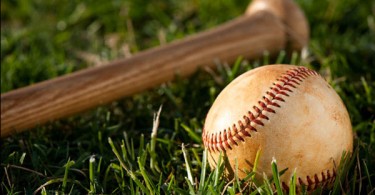I’ve been doing some post-season spreadsheeting, partly to get ready for offseason EFL chores (defense updates, rule 5 drafts, maybe an expansion draft if we add an owner, that kind of thing). And, more remotely, to be ready to do my scouting for those events. And — the reason I am doing this now so soon after the season — to understand better how the just-finished season finished just the way it did.
And I’ve already learned something absolutely amazing. Too awesome, with too many implications, not to share. 1
Consider this list, which shows how much 2023 fWAR each team had on its roster at the end of the season.
- BC: 33.4
- CK: 48.2
- DC: 33.4
- FH: 80.6
- HD: 56.7
- KD: 28.1
- OD: 54.8
- PA: 58.9
- PP: 43.3
- PR: 40.6
- SS: 53.2
Working upward through our standings, there are several fascinating things here.
- The Cascades and the Balk rosters ended up with players whose total fWAR was the same — 33.4. Their runs scored/runs allowed ratios were almost identical (predicting 63.4 wins for Bellingham, 62.9 for DC). Bellingham won 68.5 games; DC won 59.2. Why the difference?
- Kaline had — sorry, Tom — a rather eye-popping 28.1 fWAR on its final roster. Instead of winning 5 fewer games than BC and DC, they won 3.5 more than BC and 12.8 more than DC. How did they do that?
- The Kangaroos had 8.5 less fWAR on their roster than the Dragons, but beat the Dragons by 3 games. The Seraphim had 3.5 less fWAR, but beat the Dragons by 3 games. The Alleghenys had 2.2 more fWAR, but beat the Dragons by 6.6 games. The Wolverines had 1.9 less fWAR but beat the Dragons by 11 games. John had every right to sit there, day after day, thinking “my team is as good as these other teams. Why am I in 6th, 7th, 8th place?” It’s an excellent question.
But here is the stunningest thing of all: the Tornados had over 80 fWAR on their roster at the end of the season. That’s almost 22 wins worth of better talent than the second WARiest team (the Alleghenys), and 26 games better than the official, going-on-the-trophy Wolverines.
A team with 80.6 fWAR is projected to win about 128 games in a 162-game season. The MLB record for wins in a season — over 140 seasons, remember — is 116. The 2023 Tornadoes might have had the best concentration of talent ever seen in MLB history! I did a quick survey of 10 of the greatest all time teams. The top fWAR I found was the 1927 NYY at 65.7. The second highest I found was from 1998 — not the Yankees (57.3). The best team by fWAR in 1998 was the Braves (64.6). I am sure I missed some really good teams, but those were the only two I found that topped 60. 2
How did they NOT win?
Here are some possible partial explanations. No, not explanations. They might shave pieces off the puzzle, but they don’t solve it.
Number 1: Much of that team – at least 28 WAR of it — was acquired in trades in July and August — mostly July. They could only start playing for the Tornados when we started our August, so at most 1/3 of the season. Setting Ohtani aside for the moment, this means about 13 fWAR for the other trade acquisitions came on other teams – which may account for some of the other oddities I’ve pointed out.
Number 2: Ohtani hurt his pitching arm only 3 weeks after he joined the T’s, and stopped hitting a week after that. So Flint Hill got about 1/7th of Shohei’s 2.4 pitching fWAR, and 1/6th of his 6.6 hitting WAR. That’s less than 1.5 WAR, so there goes another 7.6 fWAR.
That still leaves the T’s with about 60 fWAR available to them.
Losing by 5 games to a team (OD) about 5 games worse is a dirty trick at the hands of a cruel universe — from the Tornado perspective. There are other perspectives, but this fact may not console Tornado fans.
Those Tornado fans find themselves in a position similar to fans of the 1998 Braves. Atlanta won 106 games that season — exactly what their rs/ra ratio would have predicted, but about 6 games short of what fWAR would have predicted.
The Yankees won 114 in the regular season. They won the world series in a four game sweep, in which there were only 4 1/2 innings in which they trailed… the NL Champion San Diego Padres (43.5 fWAR).
Cheer up, Jamie. At least you didn’t suffer postseason elimination at the hands of the Pears. 3
1 (When I am doing league work, in my commissioner role, what I find out is not private information that I can keep to myself. If there’s any significant chance that other owners would think the information was material to a decision they would make, I need to share it. When I am scouting specifically for my team, this principle does not apply. Sometimes it’s hard to tell which hat I am wearing when I am digging into stats. But this time, it was mostly my commissioner hat.. so you get this report whether you want it or not.) .
2 Atlanta this year reached 56.2, the highest in MLB. We had three teams better than that. One of them was 24.4 fWAR better.
3 I know it’s hard to believe the 2023 Pears (83 – 79) might have been as good as the 1998 Padres (98-64). But it’s pretty clear they were. First of all, the Padres’ fWAR predicted about a 92 – 70- season. Their rs/ra ratio predicted a 93 – 69 season. So they were clearly lucky, by 5 or 6 games.
The Padres got to play against MLB competition. We have to play each other. Our average EFL competition is about 3% better than the average MLB team’s competition, judging by our league record (above .500 on average). When we play each other we cost each other 2 to 2.5 wins over the season, as compared to playing against average MLB teams.






Yes, when it mattered most (the 3rd and 2nd last weeks of the season), the Tornadoes were the most inept due to a few reasons. The timing was too bad, but that’s baseball! But onto 2024, where the Tornadoes only have 10 players under contract, but $80 million to spend, with the following WAR (ZIPS) already represented among our measly 10 players:
Pitching: 9.5
Hitting: 16.2
Total: 25.7
If we can add 20 more guys at the same average WAR rate (2.6 per player), we will enter the season with over 75 WAR represented on the team. If ending the season with 80 WAR didn’t result in a title, maybe beginning one with nearly as much will be the solution?